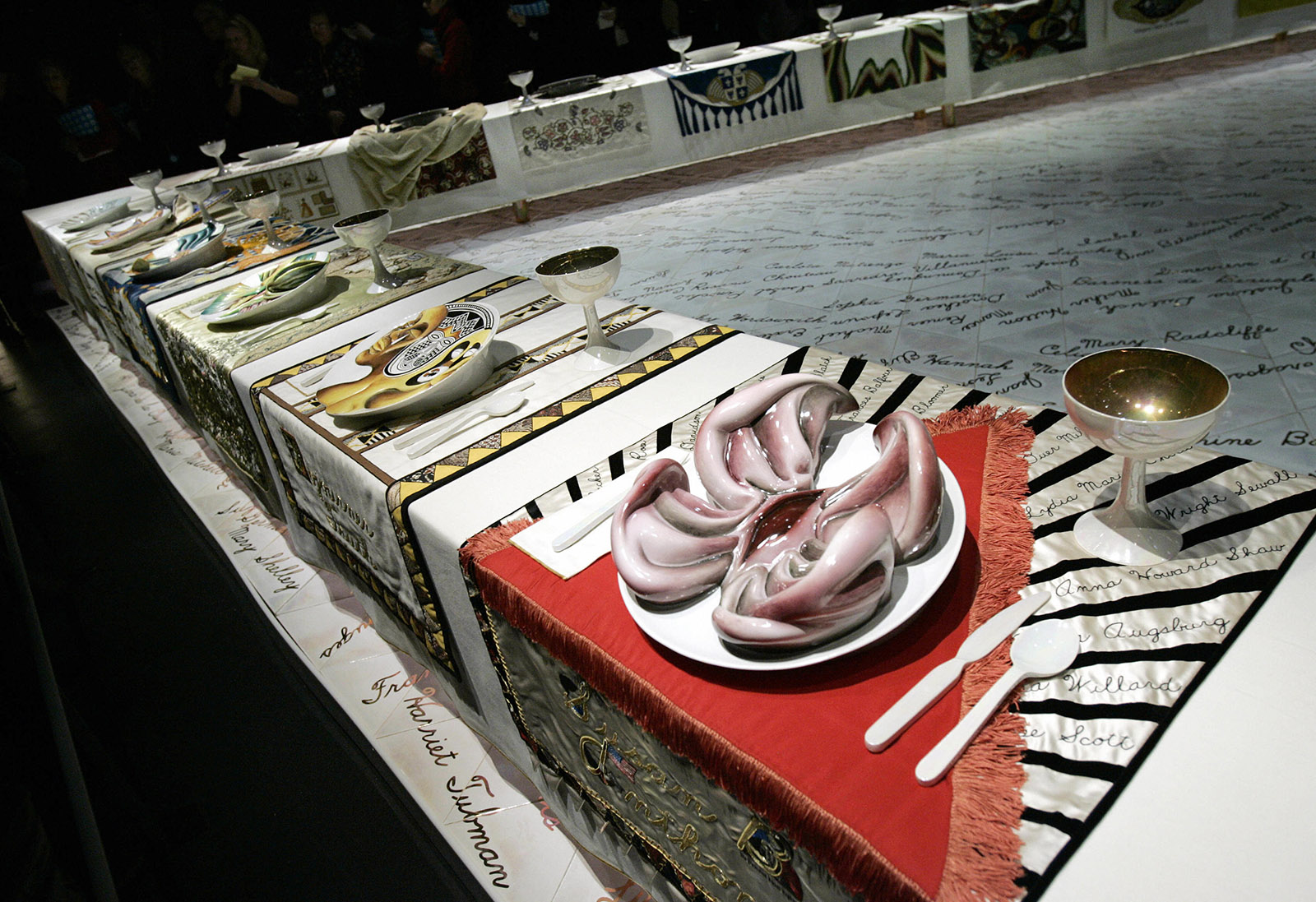In response to:
“Returning the Gaze, with a Vengeance,” NYR Daily, July 8, 2018
To the Editor:
Although I rarely respond to reviews, I feel compelled to respond to the July 8 essay by Esther Allen on the important “Radical Women” exhibition, now on view at the Brooklyn Museum. The writer misunderstands the nature of The Dinner Party, the historic context in which it was created, and, most important, the way in which I arrived at the plate images. As she stated, The Dinner Party is a symbolic history of women in Western civilization, but she completely ignores the “Heritage Floor,” which provides the literal and metaphoric foundation for the table. To focus only on “who’s at the table” is to over-simplify the art and ignore the criteria my studio team and I established and the limits we were working under.
Ms. Allen asserts that I exclude a number of important women “from the table,” including La Malinche, Santa Teresa de Ávila, Sor Juana de Inés la Cruz, Gabriela Mistral, Frida Kahlo, and Clarice Lipsector. To clarify, except for Clarice Lispector (who did not even begin writing until 1959, long after our historic time-frame), all of the women she mentions are included on the “Heritage Floor” and the accompanying “Heritage Panels,” which visually detail those women’s various contributions. Moreover, a photograph of Sor Juana figures prominently on one of the panels. Although I certainly recognized her genius, I could not find enough information about her to be able to fashion an appropriate image.
At the time I was working on The Dinner Party, in the mid-1970s, there was little or no knowledge about any of these women. The prevailing point of view was that women had no history. It is important to remember that our research was done before the advent of computers, the Internet, or Google search. As a result, a team of twenty people—largely untrained but passionate about countering the lack of knowledge—spent three years ferreting out and piecing together fragments of information from old, out-of-print books and lengthy volumes describing the father, brother, or husband of a woman we were researching in the hope that she might be mentioned. Ms. Allen ignores the role of The Dinner Party in opening up scholarship on some of the very women she references, and for others, it remains the sole source of information. And she passes over the fact that some of the artists in the “Radical Women” show studied with me, which might have been worth exploring.
Lastly, it pains me that Ms. Allen chose to use that ground-breaking “Radical Women” show to criticize The Dinner Party. How unfortunate that women continue to feel the need to denigrate the work of their foremothers in order to acknowledge more contemporary contributions. We need to build upon each other’s achievements if we are ever to break the cycle of erasure that I tried to overcome through The Dinner Party.
Judy Chicago
Belen, New Mexico
Esther Allen replies:
I’m delighted to learn that Judy Chicago shares my view of the ground-breaking importance of “Radical Women: Latin American Art, 1960–1985” currently at the Brooklyn Museum. Chicago’s The Dinner Party has been permanently installed since 2007 in the wing of the museum that also houses “Radical Women” until July 22. I was struck by the aesthetic contrast between the monumental, epic register of Chicago’s work and the ephemeral, performative register in which the artists in “Radical Women” tended to work, and made passing mention of it in my review of the Latin American show.
My review does note that several artists featured in “Radical Women” studied with Chicago, who undoubtedly contributed to sparking a new interest in art by women, creating ground on which both the show’s artists and its curators have built. The review also observes, correctly, that none of the thirty-nine women with a seat at The Dinner Party’s table is from Spain, Portugal, or any of the two empires’ former colonies in the Americas. Readers may now take note that the names of La Malinche, Santa Theresa de Avila, Sor Juana Inés de la Cruz, Gabriela Mistral, and Frida Kahlo are there, down underfoot on The Dinner Party’s “Heritage Floor.”
Chicago contends that there was little or no knowledge about these women here in 1974–1979, while The Dinner Party was being created. That is debatable. To take only one case, Frida Kahlo: 1910–1954, the first solo retrospective of Kahlo’s work in this country, curated by Hayden Herrera, opened to acclaim in 1978 at the Museum of Contemporary Art, Chicago.


